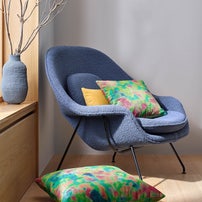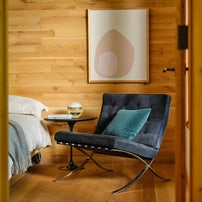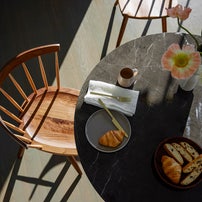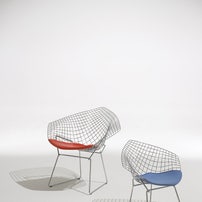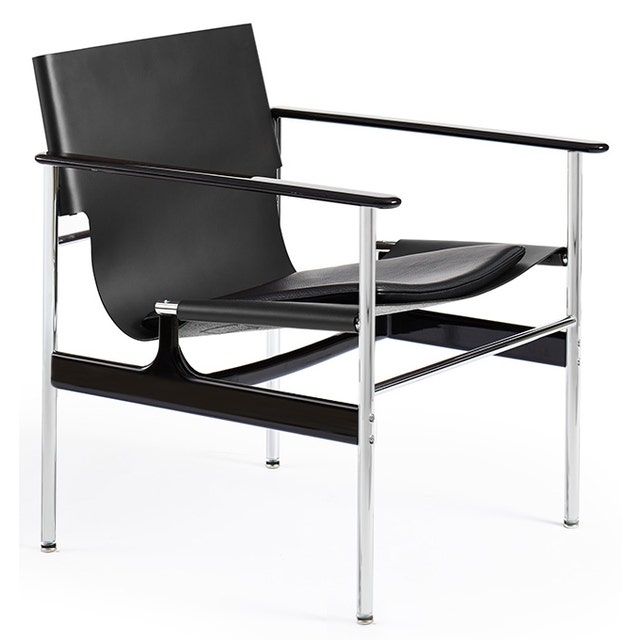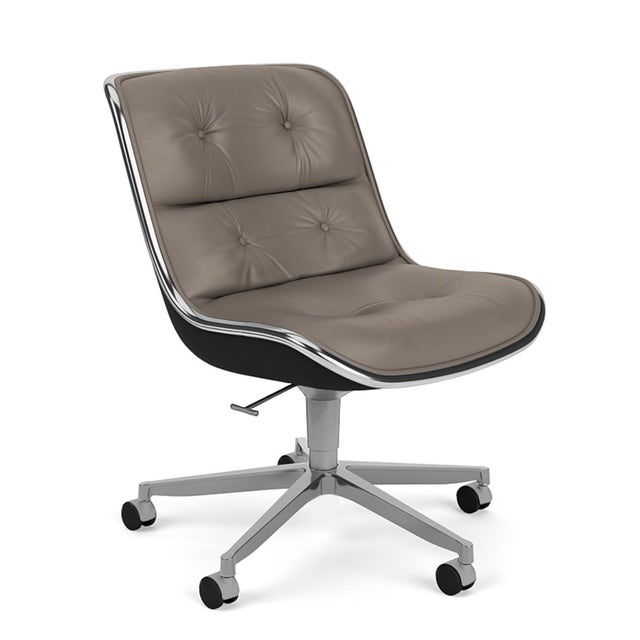Knoll Charles Pollock - Executive Conference Chair with 4-Star Base
Charles Pollock challenged himself to create a chair inspired by a single line. “Everything has an edge and everything is a line…I experimented with wire and curved the edge…I developed the idea of ‘rim technology’ and hit on the design.”
Pollock's concept was an aluminum extrusion outlining the chair that would be the central structure, holding the parts together without any further support. Slots in the aluminum rim held secured the upholstery and back shell, which became rigid only once it was fitted into the rim.
In addition to providing structure, the rim also acts as a bumper. Pollock explains: “It doesn’t rust, it doesn’t tarnish, it doesn’t fade. It keeps its visual appearance almost forever. In other words you have a visually pleasing color or texture or chrome finish articulated in a fashion that goes around the edge of the chair, which is beautiful and acts as a guard against destructing the chair no matter where you hit it….up, down, front, side, back, whatever.”
While Charles Pollock’s initial idea was ingenious, people close to the project recall that it was Florence Knoll’s legendary guidance and impeccable taste that pushed him to quiet the design down and reach his iconic final sollution.
The Pollock Executive Chair features what the designer described as "rim technology"- the use of a single aluminum band around the chair's perimeter to hold the design together, structurally and visually. Fifty years after its introduction, the Pollock Chair continues to exude timeless elegance in any home or office.
Please note that the Black frame is currently on production hold.
MEASUREMENTS:
- Height: 78.7 - 91.4 cm / 31 - 36 inch
- Width (without arms): 59.7 cm / 23.5 inch
- Width (with arms): 66.5 cm / 26.2 inch
- Depth: 71.6 cm / 28.2 inch
- Seat Height: 45.7 - 58.4 cm / 18 - 23 inch
MATERIALS:
- Arms are seamless, black phenolic plastic
- Seat and back are multi-density urethane foam. Button tufting on fabric and leather
- Outer shell is integrally colored, black textured polypropylene
- Frame "rim"is extruded aluminum with polished finish
- Steel support plate spans the width of the seat cushion
HELPFUL NOTES:
- Frame "rim" available in satin or black anodized finish
- Base top caps available in stainless steel and black epoxy
- On glides only

Charles Pollock
USA, 1930 – 2013
After graduating from Pratt Institute and working with George Nelson, he approached Florence Knoll, a celebrated designer who had studied under Mies van der Rohe. She initially refused to meet with him but relented after an interior design magazine published an article about him. On the day of his interview with her, he brought along a prototype of a lounge chair he was working on and collided with her as she was coming out of the elevator, knocking her down with the chair. She hired him anyway.
He soon talked Mrs. Knoll into paying $20 a month for a studio in a run-down part of Brooklyn, where he worked on the executive chair for five years, making it over and over again, improving it each time. The Pollock chair, made of leather and chrome, was an immediate success and came to be a mainstay of the modern office.
Pollock again demonstrated his command of line and material when he conceived the 1250 series executive collection, introduced in 1965. His idea for the chair was to use an aluminum “rim,” which outlined the chair as the main structural and design element. The resulting design was an achievement in structure and aesthetics, and the chair remains a Knoll classic to this day. The chair is still prized by collectors. Even though the royalties he earned from the chair decreased the need to work, Mr. Pollock kept designing and making paintings and sculptures.

Knoll has lived their guiding principle, "good design is good business," since 1938. Products are all created to inspire, fit, and last. The Bauhaus philosophy that furniture should complement, not compete with architecture, is central to Knoll’s design. Its extensive portfolio includes office work systems, residential mid-century modern classics, textiles, and accessories.
Designers like Harry Bertoia, Eero Saarinen, Warren Platner, Isamu Noguchi, and Florence Knoll contributed to Knoll’s iconic designs. Knoll invests in research and field studies and explores organizational behavior and technology to ensure quality excellence. As a leader in sustainability, Knoll’s practices reduce waste and conserve resources. Based in Pennsylvania, Knoll has a strong international presence, and 40 products are in the permanent collection of the Museum of Modern Art in New York.
Knoll products incur a 7.5% shipping charge at checkout, with a minimum of $85 and maximum of $500. This fee reflects White Glove Delivery for large items, which includes bringing the item to your room of choice, unpacking, removal of packaging, and assembly.
For further information on our shipping policies click here.
For further information on returns + refunds click here.


